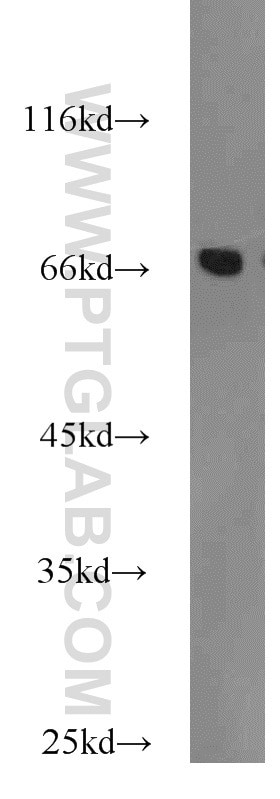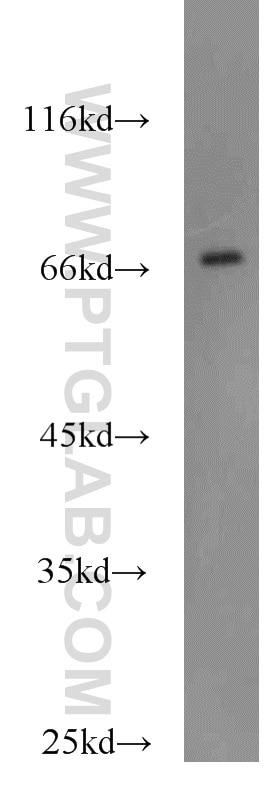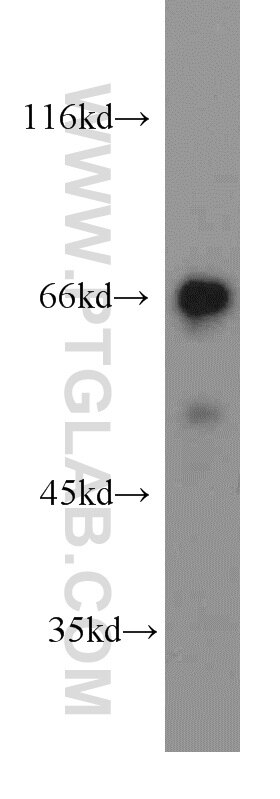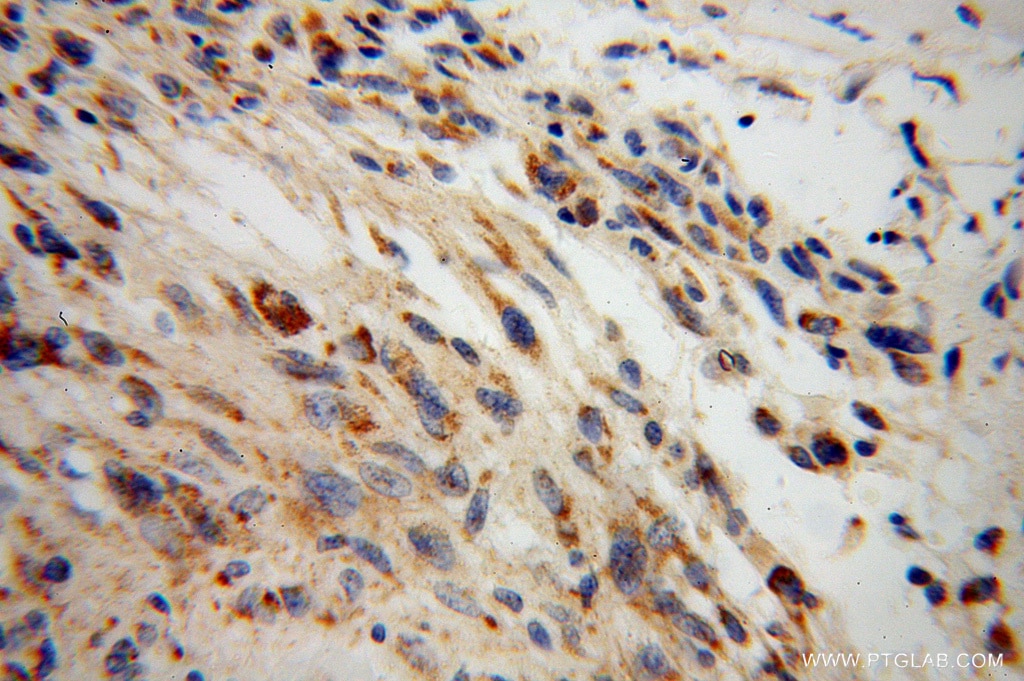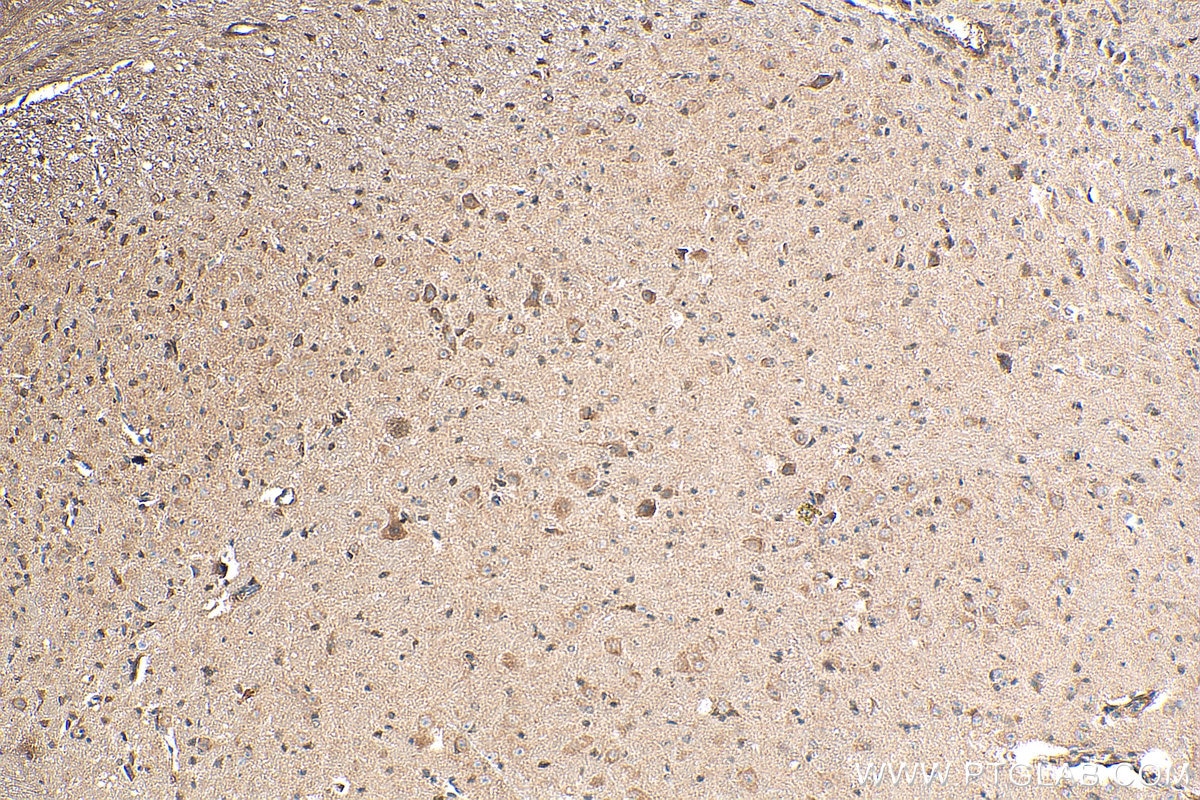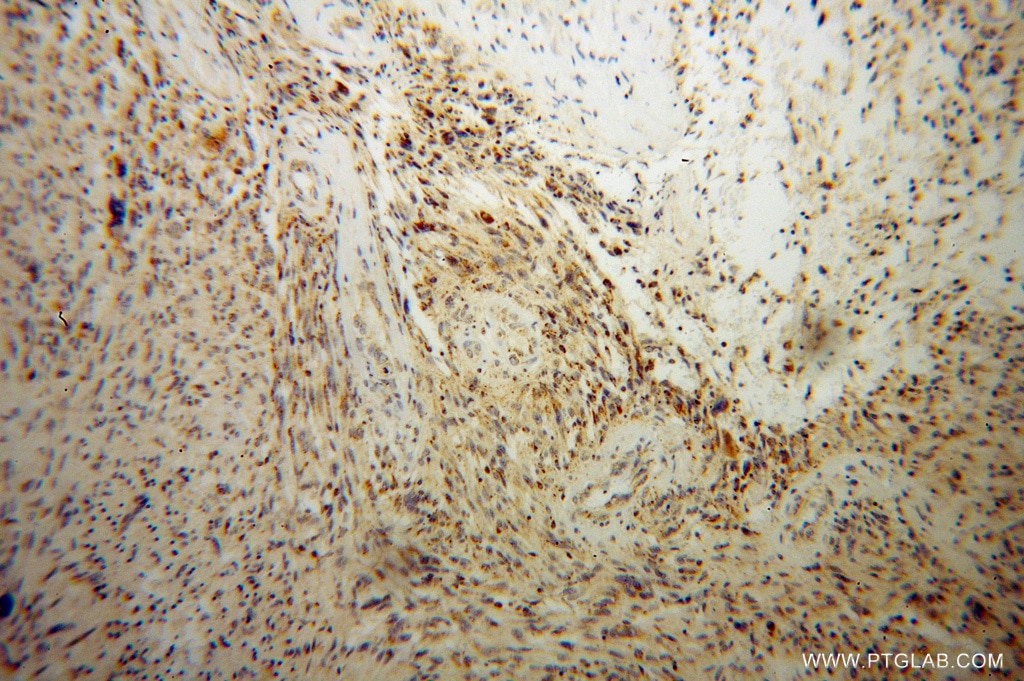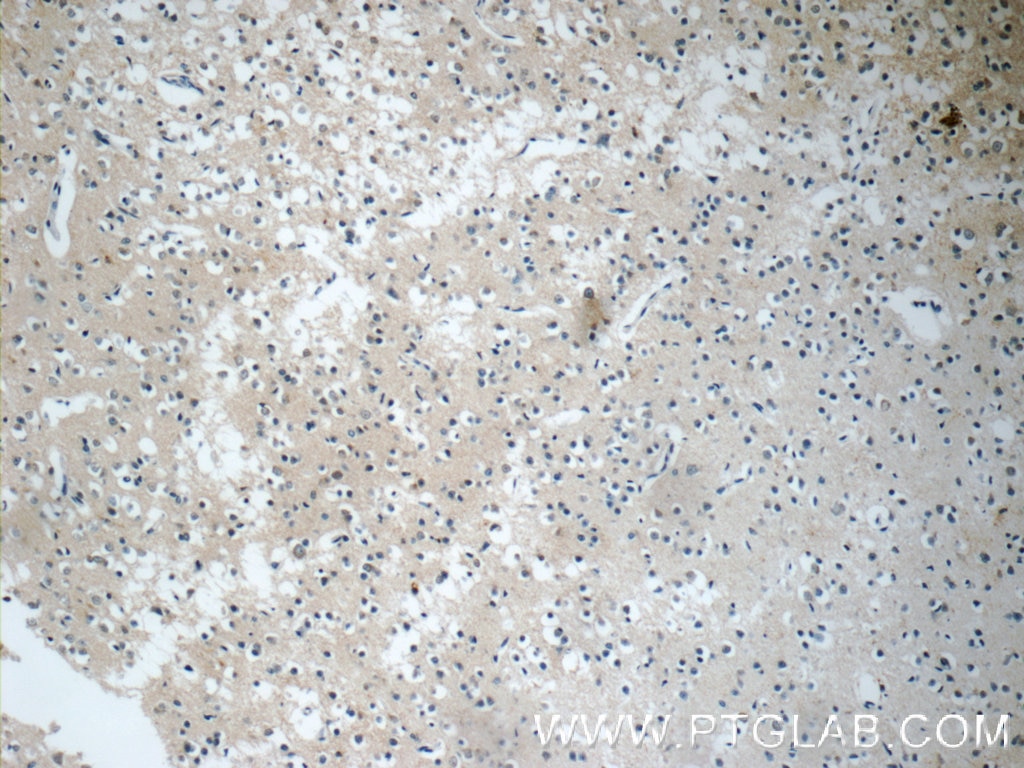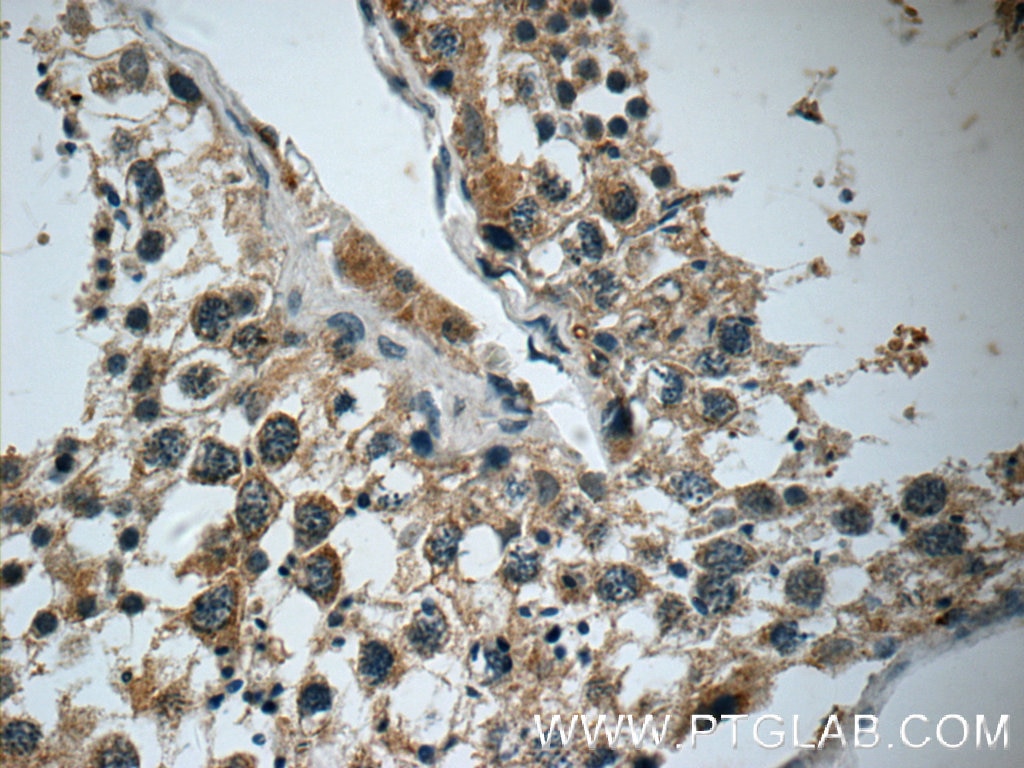- Phare
- Validé par KD/KO
Anticorps Polyclonal de lapin anti-DARS2
DARS2 Polyclonal Antibody for WB, IF, IHC, ELISA
Hôte / Isotype
Lapin / IgG
Réactivité testée
Humain, rat, souris
Applications
WB, IHC, IF/ICC, ELISA
Conjugaison
Non conjugué
N° de cat : 13807-1-AP
Synonymes
Galerie de données de validation
Applications testées
| Résultats positifs en WB | cellules K-562, cellules U-937, tissu placentaire humain |
| Résultats positifs en IHC | tissu de cervelet de souris, tissu cérébral humain, tissu de gliome humain, tissu testiculaire humain il est suggéré de démasquer l'antigène avec un tampon de TE buffer pH 9.0; (*) À défaut, 'le démasquage de l'antigène peut être 'effectué avec un tampon citrate pH 6,0. |
| Résultats positifs en IF/ICC | cellules A431, |
Dilution recommandée
| Application | Dilution |
|---|---|
| Western Blot (WB) | WB : 1:1000-1:4000 |
| Immunohistochimie (IHC) | IHC : 1:50-1:500 |
| Immunofluorescence (IF)/ICC | IF/ICC : 1:50-1:500 |
| It is recommended that this reagent should be titrated in each testing system to obtain optimal results. | |
| Sample-dependent, check data in validation data gallery | |
Applications publiées
| KD/KO | See 4 publications below |
| WB | See 8 publications below |
| IHC | See 3 publications below |
Informations sur le produit
13807-1-AP cible DARS2 dans les applications de WB, IHC, IF/ICC, ELISA et montre une réactivité avec des échantillons Humain, rat, souris
| Réactivité | Humain, rat, souris |
| Réactivité citée | rat, Humain, souris |
| Hôte / Isotype | Lapin / IgG |
| Clonalité | Polyclonal |
| Type | Anticorps |
| Immunogène | DARS2 Protéine recombinante Ag4809 |
| Nom complet | aspartyl-tRNA synthetase 2, mitochondrial |
| Masse moléculaire calculée | 645 aa, 74 kDa |
| Poids moléculaire observé | 66-74 kDa |
| Numéro d’acquisition GenBank | BC045173 |
| Symbole du gène | DARS2 |
| Identification du gène (NCBI) | 55157 |
| Conjugaison | Non conjugué |
| Forme | Liquide |
| Méthode de purification | Purification par affinité contre l'antigène |
| Tampon de stockage | PBS avec azoture de sodium à 0,02 % et glycérol à 50 % pH 7,3 |
| Conditions de stockage | Stocker à -20°C. Stable pendant un an après l'expédition. L'aliquotage n'est pas nécessaire pour le stockage à -20oC Les 20ul contiennent 0,1% de BSA. |
Informations générales
DARS2 is also named as AspRS (aspartyl-tRNA synthetase) and belongs to the class-II aminoacyl-tRNA synthetase family. The deduced 645-amino acid protein has a 47-amino acid mitochondrial targeting signal, resulting in a mature protein of 598 amino acids. DARS2 contains conserved residues involved in ATP binding, tRNA binding, and aspartic acid recognition, as well as catalytic site motifs characteristic of amino acid tRNA synthetases. It is a dimeric proteins(PMID:19443655). Rat aspartyl-tRNA synthetase has a N-terminal polypeptide extension of about 40 amino acid residues which can be removed without impairing its catalytic activity(PMID:9030747). This protein has different molecular mass(55 kDa, 50 kDa,66 kDa ) according to the publications(PMID:11306575; 19443655;15299749).
Protocole
| Product Specific Protocols | |
|---|---|
| WB protocol for DARS2 antibody 13807-1-AP | Download protocol |
| IHC protocol for DARS2 antibody 13807-1-AP | Download protocol |
| Standard Protocols | |
|---|---|
| Click here to view our Standard Protocols |
Publications
| Species | Application | Title |
|---|---|---|
Cell Metab Mitochondrial metabolism coordinates stage-specific repair processes in macrophages during wound healing. | ||
Cell Metab Tissue-Specific Loss of DARS2 Activates Stress Responses Independently of Respiratory Chain Deficiency in the Heart. | ||
EMBO Rep Loss of CLPP alleviates mitochondrial cardiomyopathy without affecting the mammalian UPRmt.
| ||
Am J Cancer Res DARS2 is a prognostic biomarker and correlated with immune infiltrates and cuproptosis in lung adenocarcinoma
| ||
Int J Biochem Cell Biol Mitochondrial oxidative phosphorylation is impaired in TALLYHO mice, a new obesity and type 2 diabetes animal model. | ||
Thorac Cancer DARS2 promotes the occurrence of lung adenocarcinoma via the ERK/c-Myc signaling pathway
|

